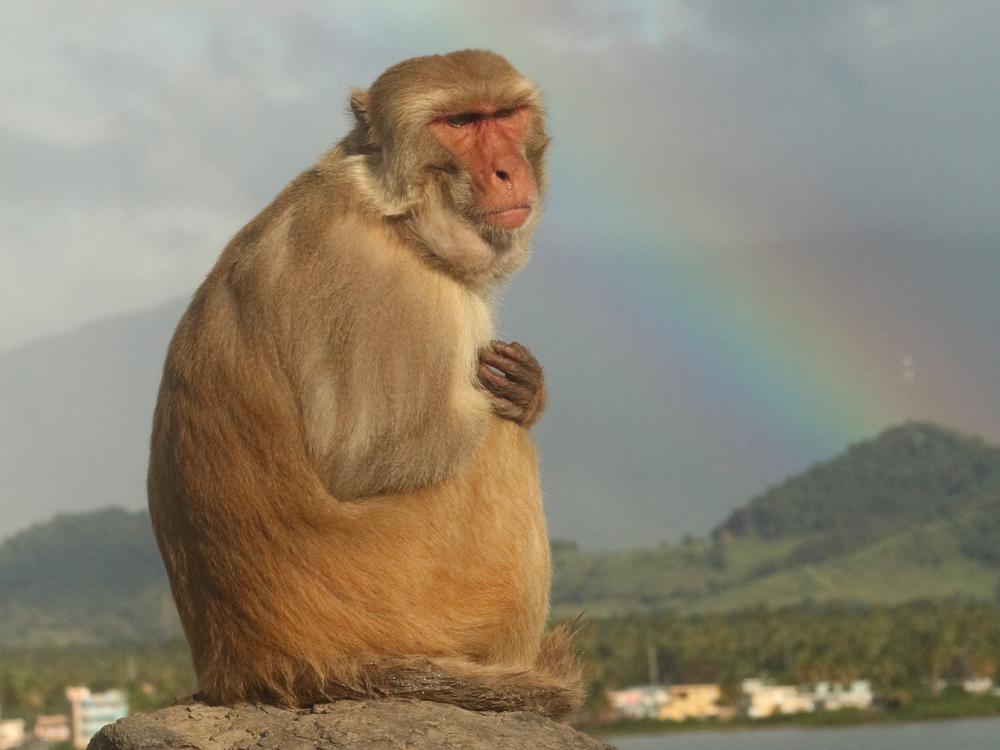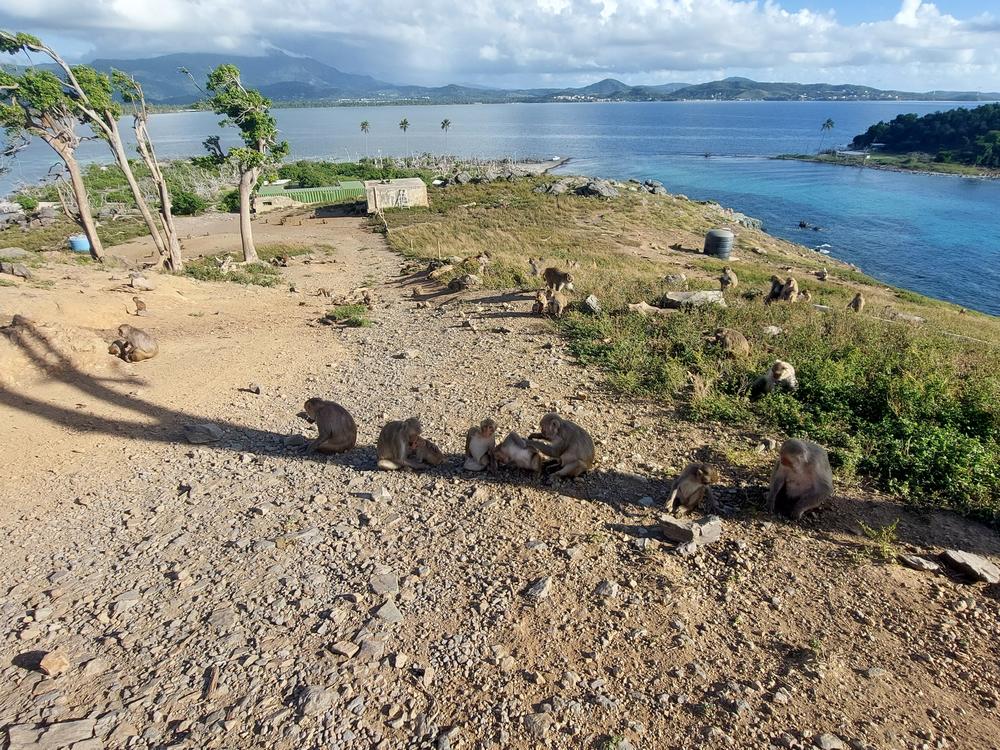Section Branding
Header Content
These monkeys were 'notoriously competitive' until Hurricane Maria wrecked their home
Primary Content
Hurricane Maria devastated Puerto Rico in September 2017. But it also tore through a tiny island less than a mile offshore called Cayo Santiago. Although no people were living there, it was inhabited by hundreds of rhesus macaques.
These monkeys had roamed the island since 1938, when an American primatologist brought their ancestors from India to create an experimental field site for studying these primates in the wild.
"It's a fantastic location to go and study their behavior, their genetics, their cognition," says Lauren Brent, a behavioral ecologist at the University of Exeter. "It's the source of most of what we know about this species."
On Cayo Santiago, an island so small it takes only about half an hour to walk its length, the rhesus macaques have a reputation for being intolerant, hierarchical and aggressive — "despotic and nepotistic" is how researchers describe them.
"They're notoriously competitive," says Brent. Imagining herself as one of the monkeys for a moment, she adds, "I form alliances with a small number of members of my group, and we go after what we want against our other group members or against another group."
The macaques' island life didn't really change much over the years. But in September 2017, Hurricane Maria laid waste to their home. Now, in research published in the journal Science, Brent and her colleagues report that the devastation seems to have fundamentally altered the monkeys' society.
A ravaged home
A few days after Hurricane Maria ripped through the Caribbean, one of Brent's colleagues recorded a video of the island from a helicopter. "This was the first time really anyone had seen the destruction that had occurred on Cayo Santiago," she says.
Most of the 1,800 monkeys had survived — somehow. "We don't know where they went," says Brent, "or how they managed that."
The island itself, however, was devastated. Almost two-thirds of the vegetation was destroyed. And this meant that the monkeys had way less shade in which to find relief from the sweltering 100-plus-degree heat. "You're just exposed to the full onslaught of the sun," says Brent. All that remained were "little puddles of shade."
Camille Testard, a neuroscientist and behavioral ecologist who was in graduate school at the University of Pennsylvania at the time, remembers just how desperate the macaques were.
"You'd have scenes of one dead tree and you'd have the shade behind it," says Testard. "It's just this one line — and the monkeys would all line up in that one line. You'd even have some animals following us in our shade."
But Testard and her colleagues in Puerto Rico noticed something else. Despite the limited shade, the macaques weren't squabbling over it. They seemed to be more tolerant of one another.
Testing tolerance
That led Testard to compare the monkeys' social interactions in the five years pre-hurricane with those in the five years post-hurricane. And she found that the macaques had become more likely to sit closer to one another in the puddles of shade and to do so in larger groups.
"So it's not just that I sit next to my favorite monkey more," she explains. "It's that I sit next to a lot of new monkeys that I didn't use to sit next to before."
Testard observed that the animals hung out closer to one another at other times of day as well and not just when sharing shade.
The big surprise was that overall aggression levels of the macaques dropped. "It's completely the opposite of what we thought this primate would do," says Brent.
Testard's theory is that being aggressive makes a monkey hotter.
"What you're trying to do is lower your body temperature as efficiently as possible," she says. "Being aggressive — that really increases your body heat." So playing it cool is a way of actually keeping cool.
Brent was struck that in the face of an altered habitat, the monkeys altered their social structure. "Yes, animals are using their social lives to cope with challenges," she says. "But two, they're flexible in how they go about that. They can change what their social networks look like."
In addition, the macaques that had more social partners on average — which meant more shade access — were 42% less likely to die. The mortality rates haven't changed. Rather, "it's what predicts their survival that has changed," says Testard. "These partnerships, which help you access shade to lower your body temperature, [are] really key for these animals."
Jorg Massen, an animal behaviorist at Utrecht University, who wasn't involved in the study, says the research aligns with an emerging understanding of some primates' social plasticity — up to a point.
"It's not endless, such flexibility, of course," he argues. "There is some flexibility, but we shouldn't overestimate it."
Massen is curious to know about the mechanism that drove this change. "How is it that these normally quite intolerant macaques suddenly become so tolerant?" he wonders. "What's the hormonal, maybe even genetic or epigenetic, underpinnings of that behavior?"
Climate change is transforming habitats the world over, challenging animal populations all over the globe.
"This need for rapid change is increasingly common with the increasing of natural disasters and other types of ecological changes," Testard explains.
And she says the macaques — through their social flexibility — show us one way that some species might try to adapt.


